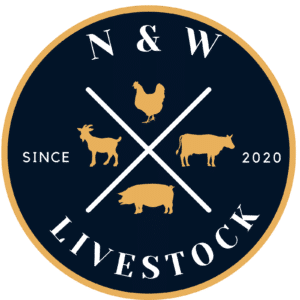The information below has been supplied by dairy marketers and other industry organizations. It has not been edited, verified or endorsed by Hoard’s Dairyman.
Beef x dairy crossbreeding is still a relatively new concept for many calf raisers, but as an industry, we know there’s a lot of opportunity to add value to an operation. Calf raisers now need to understand how to best manage and raise these unique calves for the greatest return.
To optimize the value of beef on dairy calves, evaluate your management practices and protocols for opportunities to drive calf health and growth – higher quality crossbreds will keep buyers returning.
- Insist on quality colostrum. Dairies should treat crossbred calves just as they would their valuable replacement heifers for optimal immune function and health. The most important factor in colostrum management is providing an adequate amount of high-quality colostrum at the right time. It’s also recommended for dairies to utilize a scours vaccine in dams to provide passive immunization to calves via colostrum.
- Protect against respiratory disease. Many calf raisers are seeing excessive respiratory disease rates in crossbred calves post-weaning. To successfully immunize these calves and prepare them for the challenges their immune system will face, use an intranasal vaccine in the first week of life and again at 30-60 days of age. Vaccinate for respiratory disease with an approved injectable vaccine around four to six months of age.
- Match nutrition to growth rates. Beef on dairy crossbred calves are built for growth, so provide them with the appropriate amount of milk and feed to match their ability for nutrient intake. In general, follow best practices that you would for feeding any cattle: meet or exceed nutrient requirements of calves based on size, gender and desired growth rate,1 consistent feeding times and amounts, quality rations, bunk management, monitor for acidosis, and always provide fresh water and feed.
- Add value with implants. Growth-promoting implants work in all types of cattle to increase rate of gain and improve feed efficiency, potentially providing a 100 to 125 lb advantage over a 350 to 400 day feeding period. For a calf that’s just weaned out of the hutch, a low potency implant might be all that the calf needs for a boost in performance. Using a combination implant during the last 100 to 200 days on feed provides a significant improvement in weight gain and muscle growth in steers and heifers.
- Treat BRD diligently. Early intervention is the best tool that we have to successfully control BRD. Train workers to recognize the signs and symptoms of BRD so they know what to do and when to do it, enabling faster identification. Treatment protocols that include recommended post-treatment intervals should be established with your veterinarian. Work with your veterinarian to set disease thresholds for initiating metaphylaxis and administer a proven antibiotic solution to effectively control BRD.
Continuous improvement
Crossbreeding beef on dairy animals is a practice that is likely here to stay, and the outlook is more positive than ever. Raising crossbred calves is still new to many calf raisers, so it’s important to continuously monitor your success and improve on your program.
Calf raisers have the opportunity to add more value to beef x dairy calves through health and management practices that emphasize immune function and growth. Work closely with your veterinarian, nutritionist, university extension specialists and animal health representatives to evaluate your management program and get the greatest return on your calves.



